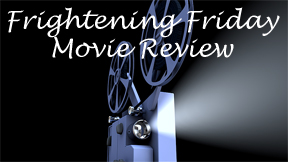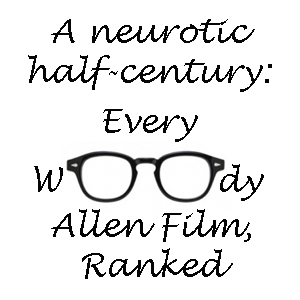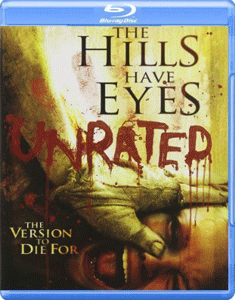The Naughties (2000-09 in horror films) were a cynical time of slick remakes. But entries like director/co-writer Alexandre Aja’s “The Hills Have Eyes” (2006) remind me that these films could be slick in a good way. The Frenchman has gone on to make other tasty stuff like “Crawl” (2019), so if this hired-gun work was his springboard, that alone gives it value.
Multi-aged mutant killer cannibals
If you haven’t seen Wes Craven’s 1977 original, this is a worthy mainstream alternative. As with a slightly better Craven remake – 2009’s “The Last House on the Left” — “Hills” is constructed around a mid-film sequence of harrowing violence.
A reasonably likable seven-person family led by Ted Levine’s Big Bob and Kathleen Quinlan’s Ethel is stranded in the New Mexico desert (Morocco ably stands in) when their tires blow out. But they’re not terribly worried. Unlike us, they don’t know about the mutant cannibals living in the surrounding hills.

“The Hills Have Eyes” (2006)
Director: Alexandre Aja
Writers: Alexandre Aja, Grégory Levasseur (screenplay); Wes Craven (original film)
Stars: Ted Levine, Kathleen Quinlan, Emilie de Ravin
Interestingly, this remake came out three years after the “Texas Chainsaw Massacre” remake – the same gap of time between the originals of each. In a parallel to “Chainsaw,” a gas station proprietor (Tom Bower, because of course it’s Tom Bower – you might remember him from “Die Hard 2: Die Harder”) is filtering victims to his rural neighbors.
He’s a little different because he insists he’s done doing this. But unless he really means it, he’ll be no help to Big Bob’s family.
After suspicious incidents such as one of their two dogs being eviscerated, the family finds their trailer home turned into a bloodbath. A pair of cannibals unleashes a legitimately shocking flurry of unhinged violence and killing.
Camera shy
And rape. “Last House on the Left’s” sexual assault was more effective. Here, the camera shies away from what’s happening to sweet young Brenda (“Lost’s” Emilie de Ravin) and we’re reminded this is a (relatively) “safe” film.
Meanwhile, a mutant fondles older sister Lynn (Vinessa Shaw) while holding a gun at her baby’s head. This is a creepy scenario, but again the camera gives us only a taste. We can tell ourselves “It’s only a movie,” whereas “Last House” doesn’t let us.
That’s not to say “Hills” isn’t intensely watchable. It is, throughout its perfectly calibrated 107 minutes. Aside from the general outline of “violent cannibals versus vengeful tourists,” we don’t know what’s gonna happen. Who is going to step up as a hero, if anyone? How many mutants are in those tunnels? Can they be outsmarted in their own territory?

The budget is put to good use. The prosthetics on the cannibal’s faces by industry legend Greg Nicotero (“The Walking Dead”) are top-shelf. Advancements in this field are among the reasons Craven’s film was worth modernizing.
But Aja and co-writer Grégory Levasseur aren’t as interested in saying something modern, aside from reminding us that there are still wide-open spaces in the American West. Cellphone service doesn’t reach this beautiful wasteland and horror can happen unnoticed.
An outdated critique?
In the 1970s, the idea of a mutant subhuman species springing from the Manhattan Project tests was compelling. By 2006, it was old hat. We could be confident this was not an actual result of the nuclear tests in New Mexico.
Granted, the theme of morally irresponsible acts by the government is still darkly visceral, like when mutant Cyst (played by Nicotero himself) sings “The Star-Spangled Banner.” He sits in a rocking chair in a fake house in a Manhattan Project test village. (Are those still standing? Well, it’s a good horror-movie conceit, regardless.)
This remake could’ve been more effective by tying in to a more recent incident. It’s not like there was a shortage of U.S. atrocities from 1977-2006.
Anything to do with the Middle Eastern wars was considered too fresh. Films in the Aughts shied away from post-9/11 commentaries. Indeed, the new “Chainsaw” remained set in the ’70s. But surely a bit of brainstorming could’ve led to a critique of something from within a half-century window.
“Hills” is among many remakes from the Naughties that doesn’t have a creative reason for existing. But when watched today, it’s clear what these films (especially “Chainsaw” and this one) did achieve, rather than what they didn’t achieve. Aja delivers thrills and creep-outs, and I can see how “The Hills Have Eyes” could hook a wide-eyed young viewer.

